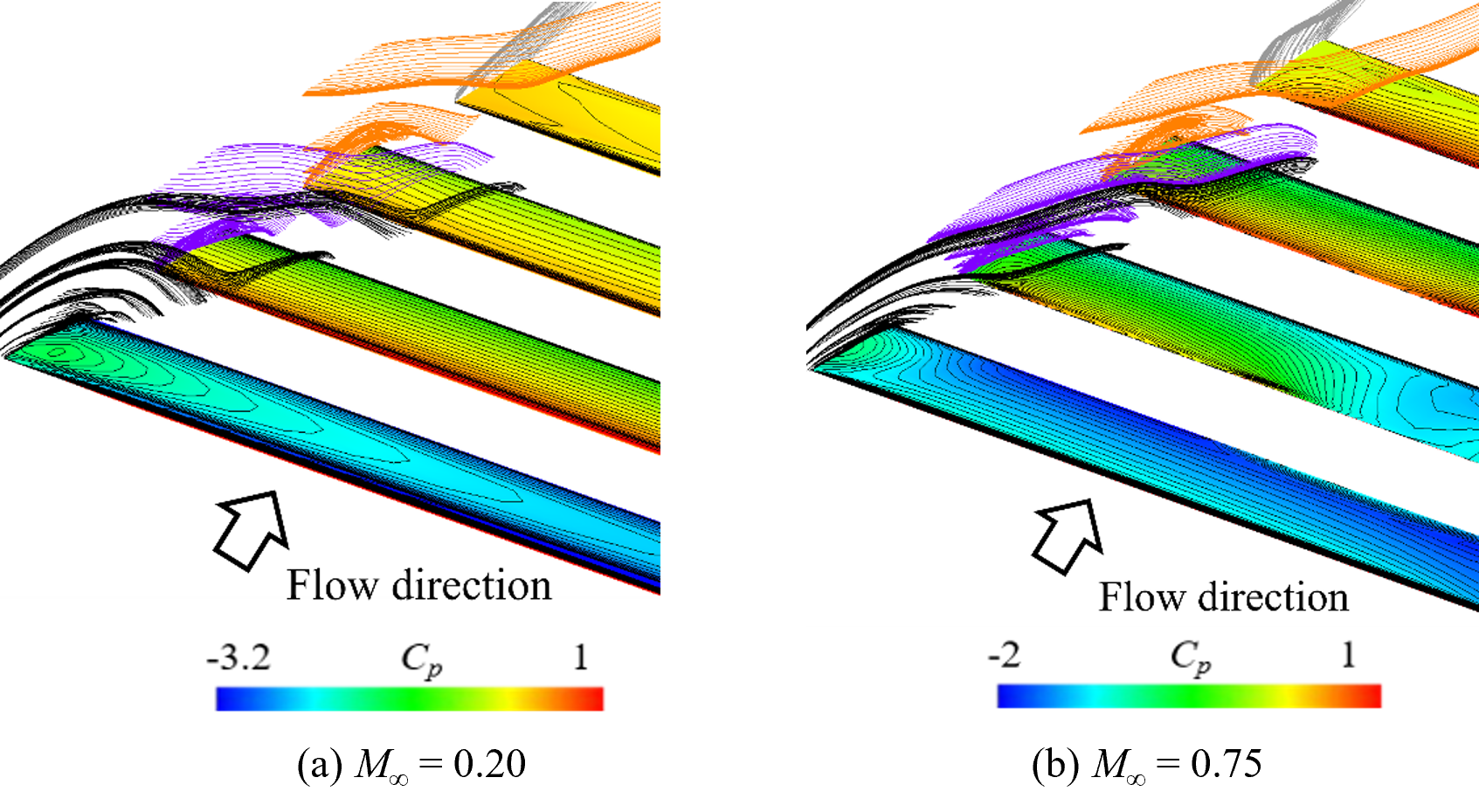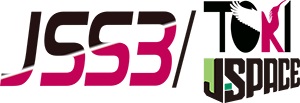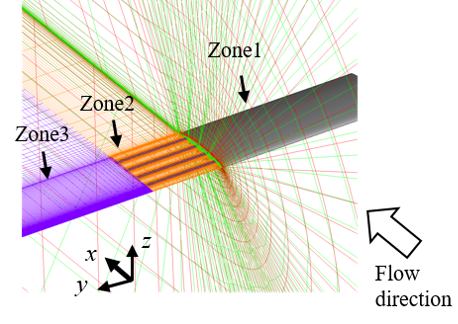Study on Aerodynamic Characteristics and Flow Fields for Mars Exploration Airplane
JAXA Supercomputer System Annual Report February 2021-January 2022
Report Number: R21EACA18
Subject Category: JSS Inter-University Research
- Responsible Representative: Seiichiro Morizawa, Lecturer, National Institute of Technology, Okinawa College
- Contact Information: Seiichiro Morizawa(morizawa@okinawa-ct.ac.jp)
- Members: Seiichiro Morizawa, Takashi Matsuno
Abstract
Recently, many kinds of research on unmanned aerial vehicles such as the Martian atmosphere and a high altitude one in the Earth’s stratosphere have been conducted actively. These environments become that the atmospheric density and temperature are much lower. Then, the flight condition of the airplane is low Reynolds and high Mach numbers condition, and the aerodynamic data is insufficient for designing these vehicles. The applicants have been found that the separation flow of the condition is stabilized and the aerodynamic characteristics deteriorate. In particular, this tendency is more pronounced in thin airfoils. The purpose of this project is to clary the relationship at the low Reynolds and high numbers condition between aerodynamic and flow field for aerodynamic devices related to boundary layer control.
Reference URL
N/A
Reasons and benefits of using JAXA Supercomputer System
To conduct three-dimensional CFD, huge computational memories and costs are required. It is almost impossible to have a computation by the workstation at our laboratory. So it is necessary to conduct our research with a super-computer.
Achievements of the Year
In this year, numerical simulation of Mach numbers 0.20 (low subsonic speed and incompressible flow) and 0.74 (transonic speed and compressible flow) for the wing_grid (Fig.1), a wingtip device with multiple wing tip bifurcations and gap that mimic the shape of birds, were conducted as in the previous year. Then, the differences between these flow fields are discussed. Figure 2 shows the surface pressure around the wing_grid at the angle of attack 6 deg. with Mach numbers 0.20 and 0.74. In addition, the different colored streamlines of each wingtip are illustrated. The result suggests that the wingtip vortices generated from the wing_grid are observed from both Mach numbers 0.20 and 0.74. In particular. These results seem that the first wingtip vortex of the wing_grid is enhanced.

Fig.2: Surface pressure coefficient with different colored streamlines near the trailing edge (angle of attack 6 deg)
Publications
– Peer-reviewed papers
Seiichiro Morizawa and Shigeru Obayashi, Evaluation of a Planar Wing with Wing Grid using CRM.65.airfoil, Bulletin of National Institute of Technology, Okinawa College, pp.1-14. (under review)
Usage of JSS
Computational Information
- Process Parallelization Methods: N/A
- Thread Parallelization Methods: Automatic Parallelization
- Number of Processes: 1
- Elapsed Time per Case: 300 Minute(s)
JSS3 Resources Used
Fraction of Usage in Total Resources*1(%): 0.00
Details
Please refer to System Configuration of JSS3 for the system configuration and major specifications of JSS3.
| System Name | CPU Resources Used(Core x Hours) | Fraction of Usage*2(%) |
|---|---|---|
| TOKI-SORA | 19816.39 | 0.00 |
| TOKI-ST | 0.00 | 0.00 |
| TOKI-GP | 0.00 | 0.00 |
| TOKI-XM | 0.00 | 0.00 |
| TOKI-LM | 0.00 | 0.00 |
| TOKI-TST | 0.00 | 0.00 |
| TOKI-TGP | 0.00 | 0.00 |
| TOKI-TLM | 0.00 | 0.00 |
| File System Name | Storage Assigned(GiB) | Fraction of Usage*2(%) |
|---|---|---|
| /home | 170.00 | 0.17 |
| /data and /data2 | 3446.67 | 0.04 |
| /ssd | 66.67 | 0.02 |
| Archiver Name | Storage Used(TiB) | Fraction of Usage*2(%) |
|---|---|---|
| J-SPACE | 0.00 | 0.00 |
*1: Fraction of Usage in Total Resources: Weighted average of three resource types (Computing, File System, and Archiver).
*2: Fraction of Usage:Percentage of usage relative to each resource used in one year.
ISV Software Licenses Used
| ISV Software Licenses Used(Hours) | Fraction of Usage*2(%) | |
|---|---|---|
| ISV Software Licenses(Total) | 0.00 | 0.00 |
*2: Fraction of Usage:Percentage of usage relative to each resource used in one year.
JAXA Supercomputer System Annual Report February 2021-January 2022



